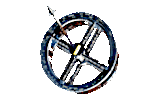
Space Stations are spacecraft flying in an approximately circular Earth orbit. They remain in orbit as long as they can be maintained and updated. They are not designed to return to Earth or to leave orbit.
All materials and personnel used to build, operate and maintain the station are transported from the Earth by dedicated spacecraft.
Most station spacecraft use rocket launch vehicles (launchers) to reach orbit and then use their own engines to rendezvous with the stations. The U.S. Space Shuttle, however, uses its own engines, with the help of booster rockets, to reach orbit.
Many different spacecraft have been used to build, operate and maintain the space stations.
Initially only Russian and U.S. craft were used to transport personnel and cargo to the stations. In 2008 and 2009, however, the European Space Agency and the Japanese also flew un-piloted cargo craft to the ISS.
In 2011 a Chinese spacecraft flew, un-piloted, and docked with the Chinese Tiangong-1 space station. Then in 2012 and 2013 U.S. companies SpaceX and Orbital ATK flew the first commercial cargo craft to the ISS.
Updated versions of these craft, with the exception of the U.S. Space Shuttles, continue to fly missions to the ISS and the Chinese station.
There are three main functions for station transport spacecraft:
1. Main Component Delivery ▽ - Placing station modules and structures into orbit.
2. Station Crew Transport ▽ - Occupying the station with personnel.
3. Supplies and Materials ▽ - For life support, operations, maintenance and experiments.
The following sections give an overview of the types of spacecraft used for the above.
Early space stations consisted of a single module which was launched, un-occupied, and used on-board engines to attain orbit. A combination of automation and remote control was used to place it in the correct orbit.
The station module itself performed as a spacecraft using a dedicated launcher and engines to reach the required orbit. The station remained in the required orbital range by regular boosting, using its own engines or those of visiting spacecraft.
The Soviet Salyut, the U.S. Skylab and the Chinese Tiangong stations were single module stations. They were all eventually left to de-orbit and be destroyed on re-entry into the atmosphere.
These stations contain a number of habitable modules and support structures which are assembled in orbit. Modular stations start with the launch of a core module using a method similar to single module stations.
Additional modules and structures, are then launched separately and added to the station. They may use dedicated launchers and their own engines, or as cargo in other spacecraft. The U.S. Space Shuttle is the only craft, so far, capable of transporting large components. Smaller components have also been transported using the U.S. SpaceX Dragon spacecraft.
The Soviet/Russian Mir and International Space Station (ISS) are modular stations. Mir has been de-orbited and destroyed, while the ISS remains in service.
Space stations allow personnel to stay in space for longer periods than was possible using standard orbital spacecraft. These station crews need to be safely transported to the station and back to Earth.
Station crew transport spacecraft are therefore based on the existing proven orbital craft. Early versions were simply modified to allow docking with the station, while later craft have been extensively modified for dedicated station use.
The following spacecraft have been used to transport personnel to space stations:
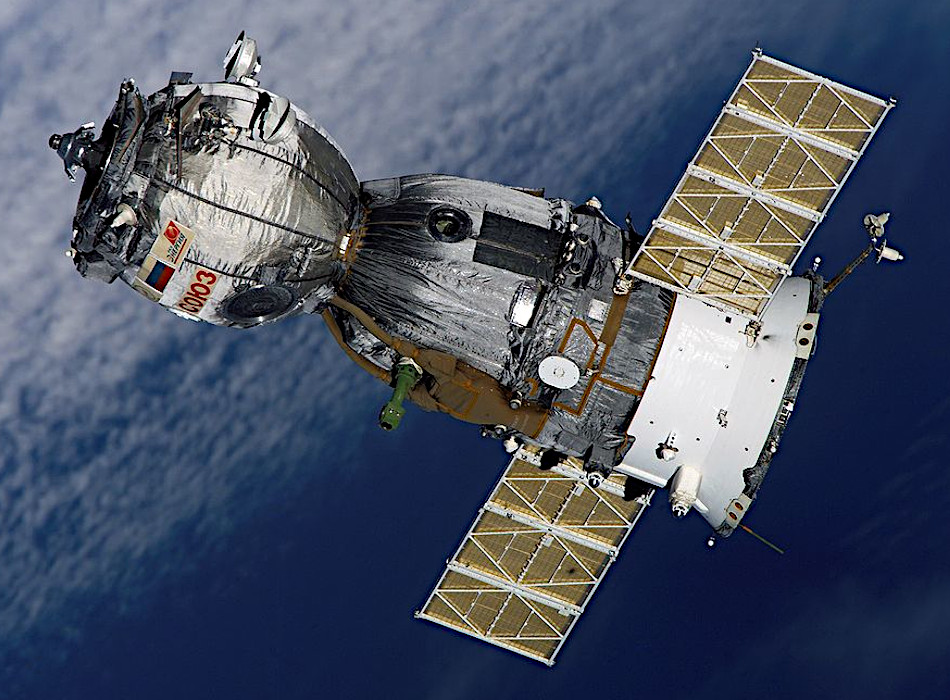
Soyuz crew spacecraft are designed for personnel and can only carry a small amount of cargo. It uses a Soviet/Russian Soyuz launcher to reach orbit and its own engines to rendezvous and dock with the station.
At least one Soyuz crew craft remains docked to the stations for use as an emergency escape vehicle for the station crews. These need to be regularly replaced with a "fresh" craft of the same type.
Soyuz crew spacecraft were originally used for orbital testing and on the Soviet/Russian Salyut and Mir stations. Upgraded versions continue to be used on the International Space Station.
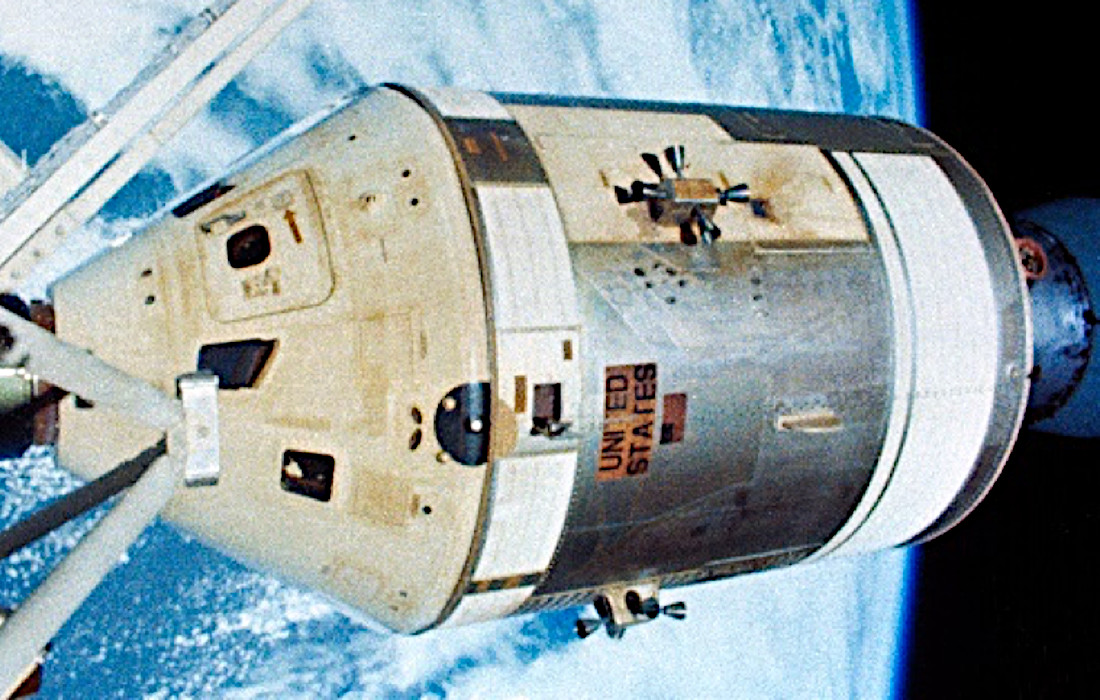
The Apollo command and service module (CSM) was originally designed for the crewed exploration and landing on the moon. Between 1969 and 1972 it carried a crew of three to the moon.
The CSM functioned as a mother ship, which stayed in lunar orbit, while the lunar module carried crew to the moon and back to the CSM. The CSM then returned the crew to Earth.
The same design of craft, without the lunar module, was used to transport personnel to the U.S. Skylab space station and return them to Earth. For this it used a Saturn IB launcher to reach orbit and its own engines to rendezvous and dock with the station.
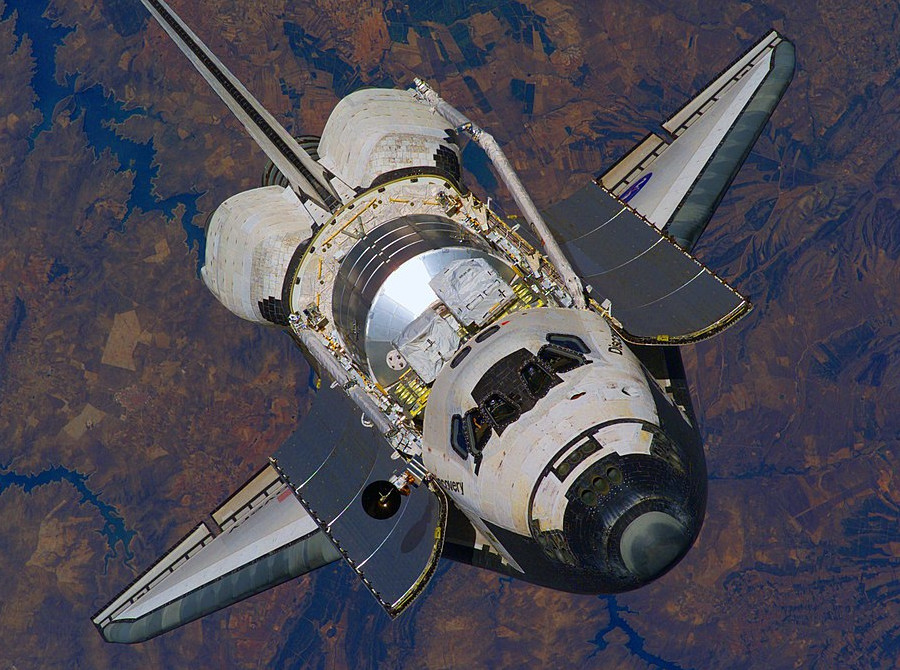
The U.S. Space Shuttle was designed for personnel and cargo, including large station components. It used its own engines and booster rockets to launch and its own engines for rendezvous and docking.
Shuttles have supported the Soviet/Russian Mir station and used extensively to build maintain and re-supply the ISS.
Shuttles only remained at a station for a short period. They were an alternative to the Russian Soyuz Crew Spacecraft for delivering new personnel to the stations and returning the replaced personnel to Earth.
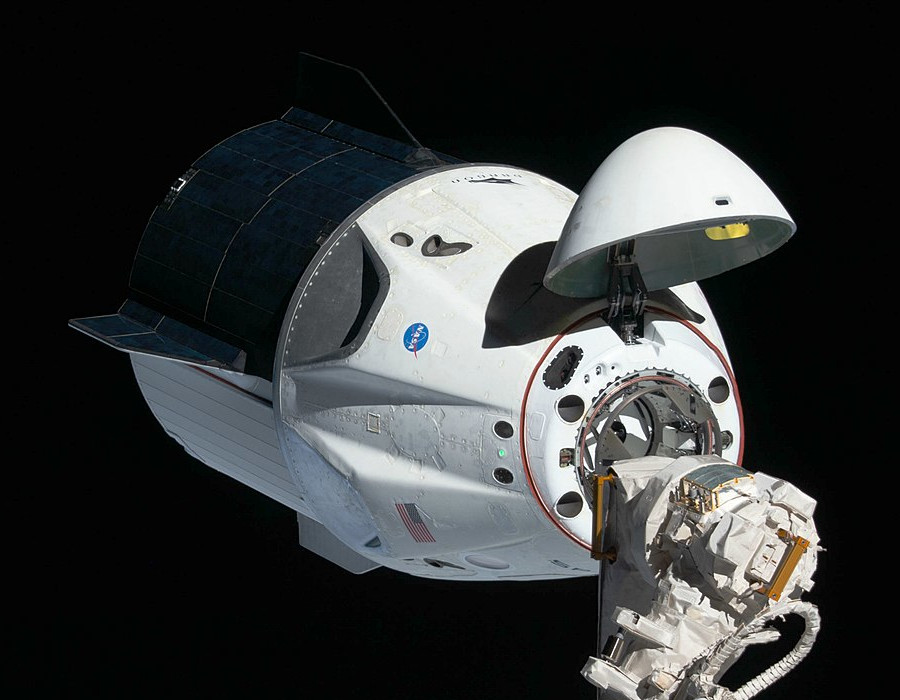
The Dragon 1 spacecraft was developed and built by the commercial SpaceX company. It was designed as a cargo only craft for the International Space Station.
An upgraded version called Dragon 2 was later developed to transport personnel and some cargo to the ISS.
The Dragon 2 version can also be adapted to transport cargo only to the ISS.
Both the crew and cargo variants of Dragon 2 use a SpaceX Falcon 9 launcher to reach orbit and their own engines to rendezvous and dock with the station.
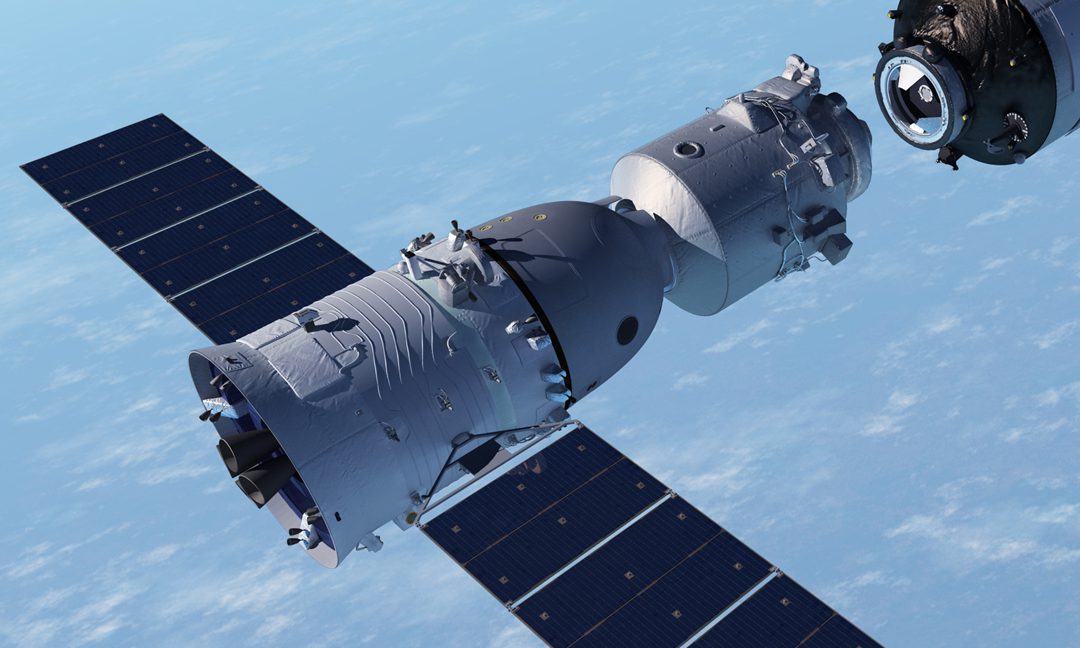
The Shenzhou Spacecraft was designed to carry personnel into orbit and to be used as a crew transport for the Chinese Tiangong space station.
It is based on the Soviet/Russian Soyuz crew spacecraft with a modified larger crew compartment.
It uses a Chinese Long March launcher to reach orbit and its own engines to rendezvous and dock with the station.
Supplies include all those goods needed to provide life support for the crews and to operate and maintain the stations. Regular deliveries are required of consumables such as fuel, water, food, oxygen and spare parts.
Most stations are also working research stations requiring specific equipment and the transport of experiment materials from and to the Earth.
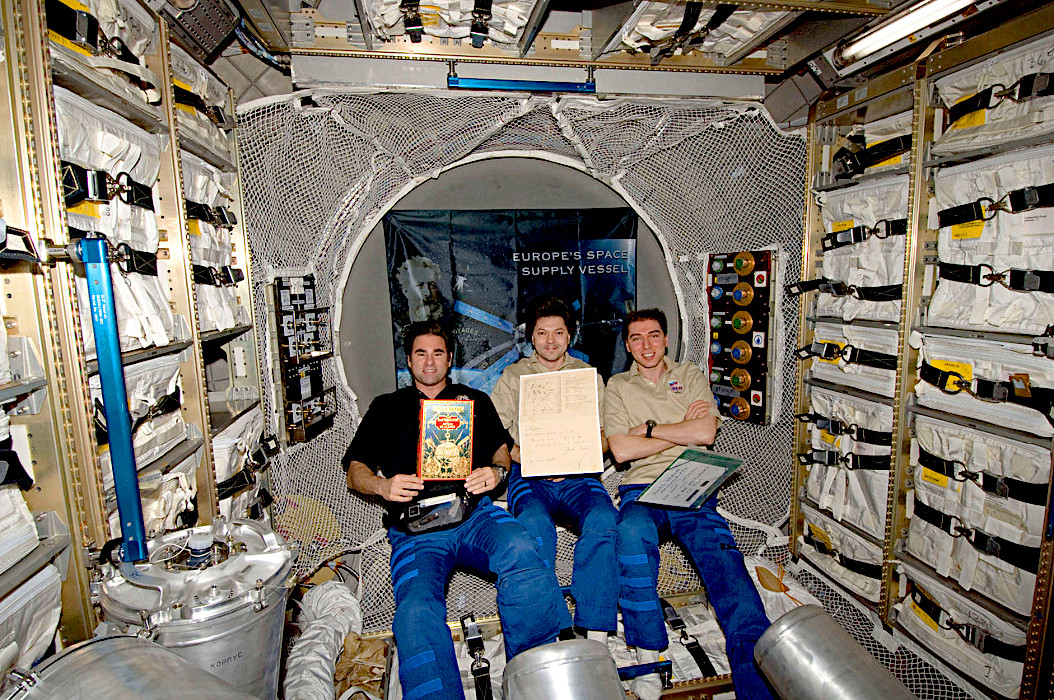
Small amounts of cargo can be transported to the stations with the crews. This was sufficient for the earlier short duration missions. As mission durations increased, dedicated cargo only craft were required for re-supply.
The exception was the U.S. Space Shuttle which was large enough to carry crews and large amounts of supplies.
The following spacecraft have been used for station re-supply of consumables and materials:
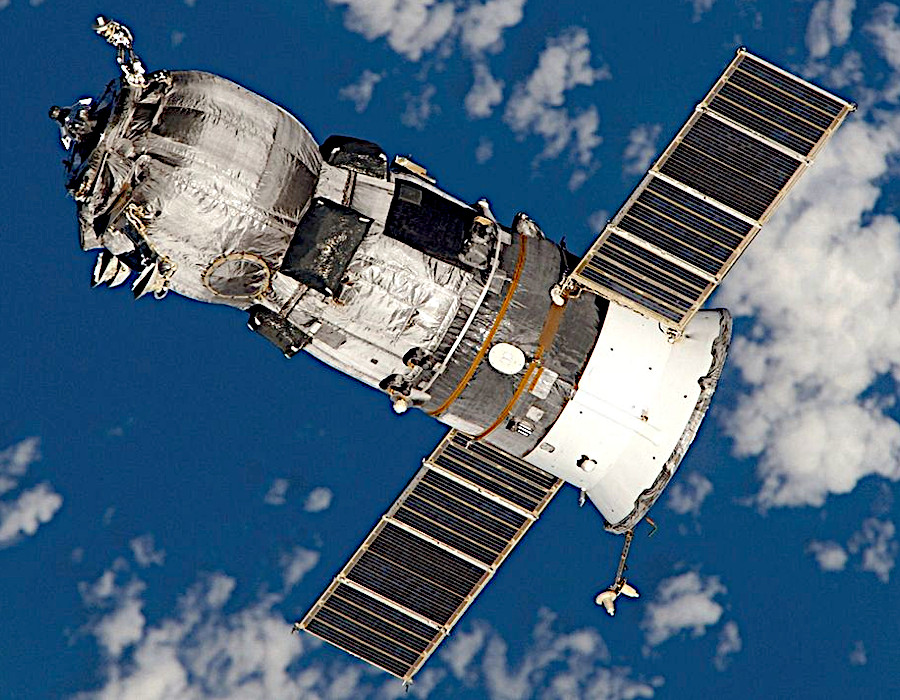
The Progress spacecraft is designed to only carry cargo. It uses a Soviet/Russian Soyuz launcher to reach orbit and its own engines to rendezvous and dock with the station. It can be docked automatically or by remote control.
Progress spacecraft have been used to carry cargo to the Soviet/Russian Salyut and Mir stations and the International Space Station (ISS).
Upgraded versions are currently used to supply the ISS.
U.S. Space Shuttle was designed for personnel and cargo, including large station components. It used its own engines and booster rockets to launch and its own engines for rendezvous and docking.
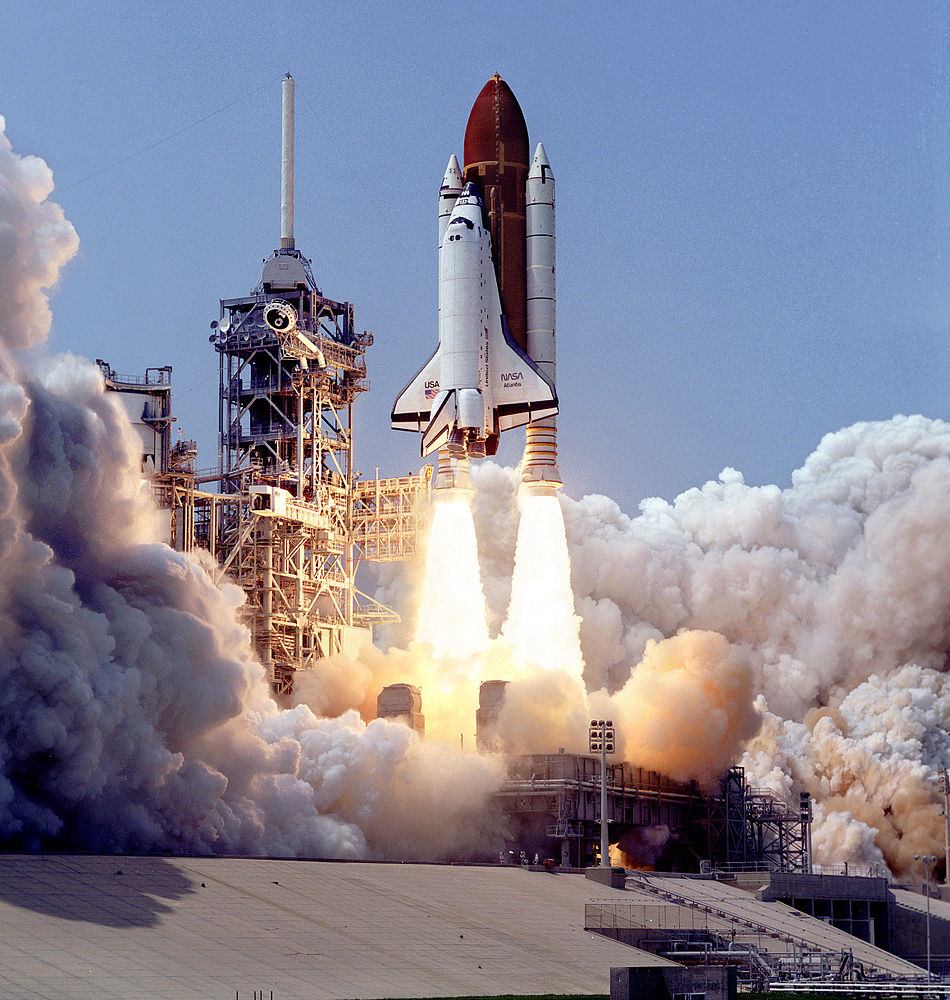
Shuttles have supported the Soviet/Russian Mir station and were used extensively to build and support the International Space Station.
On a number of re-supply missions Shuttles carried a Multi-Purpose Logistics Module (MPLM) to the ISS. MPLMs are pressurised cargo module which carried equipment, supplies, laboratory racks and experiments for the station.
After the shuttle docked to the station the MPLM is lifted from the cargo bay using the shuttle's or the station's robot arm and connected to a station berthing port. The MPLM is then be unloaded directly into the station and re-loaded with waste and items to be returned to Earth.
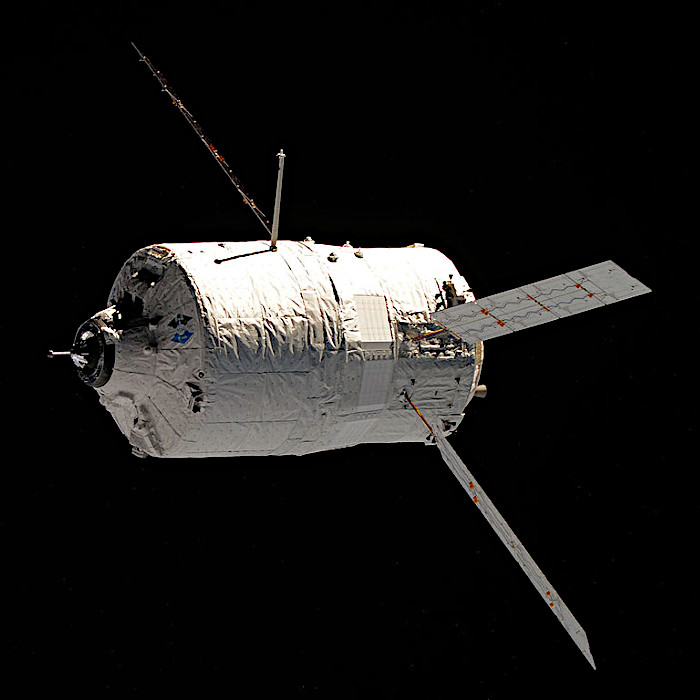
The Automated Transfer Vehicle (ATV), originally Ariane Transfer Vehicle, was an expendable cargo spacecraft developed by the European Space Agency (ESA).
It was used for cargo only transport to the International Space Station (ISS).
There have been five flights to the station, between 2008 and 2014, all launched by the Ariane 5 heavy-lift launch vehicle.
The ATV could carry three times the cargo of the Russian Progress cargo spacecraft to the ISS.
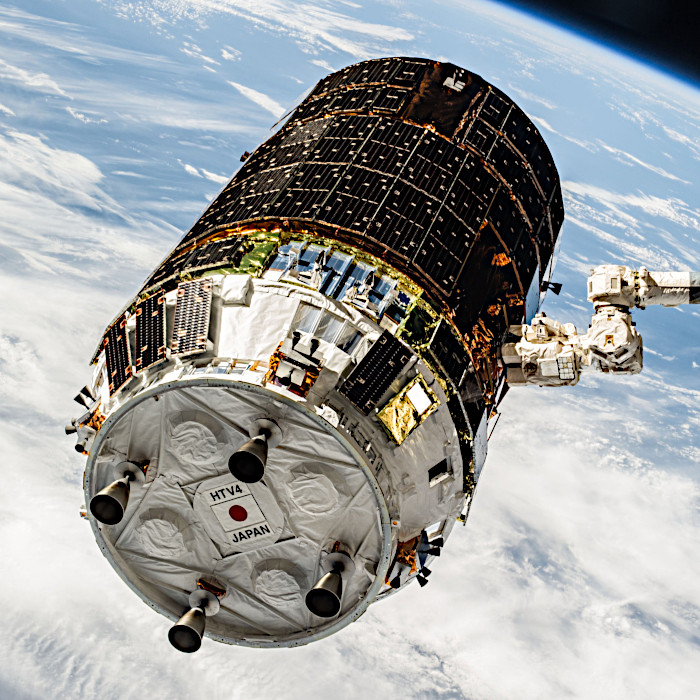
H-II Transfer Vehicle (HTV) was an expendable cargo spacecraft developed by the Japanese Space Agency (JAXA).
It was used for cargo only transport to the International Space Station (ISS).
HTV uses a Japanese H-IIB launcher to reach orbit and its own engines to rendezvous with the station. It does not dock directly with the ISS but is grappled using the station robotic arm and berthed to a port on the station.
The HTV could carry twice the cargo of the Russian Progress cargo spacecraft to the ISS.

The Dragon spacecraft was developed by the U.S. commercial company SpaceX. There have been three versions, so far, designed to carry cargo and crew to the International Space Station (ISS).
Two versions were designed to only carry cargo to the ISS:
* Dragon 1 - Does not dock directly with the ISS but is grappled using the station robotic arm and berthed to a port on the station.
* Dragon 2 (Cargo) - Uses its own engines to rendezvous and dock with the station.
All versions use a SpaceX Falcon 9 launcher to reach orbit.
The Cygnus spacecraft is an expendable cargo only spacecraft developed by the U.S. commercial company Orbital Sciences Corporation. It is now manufactured and launched by Northrop Grumman Innovation Systems.
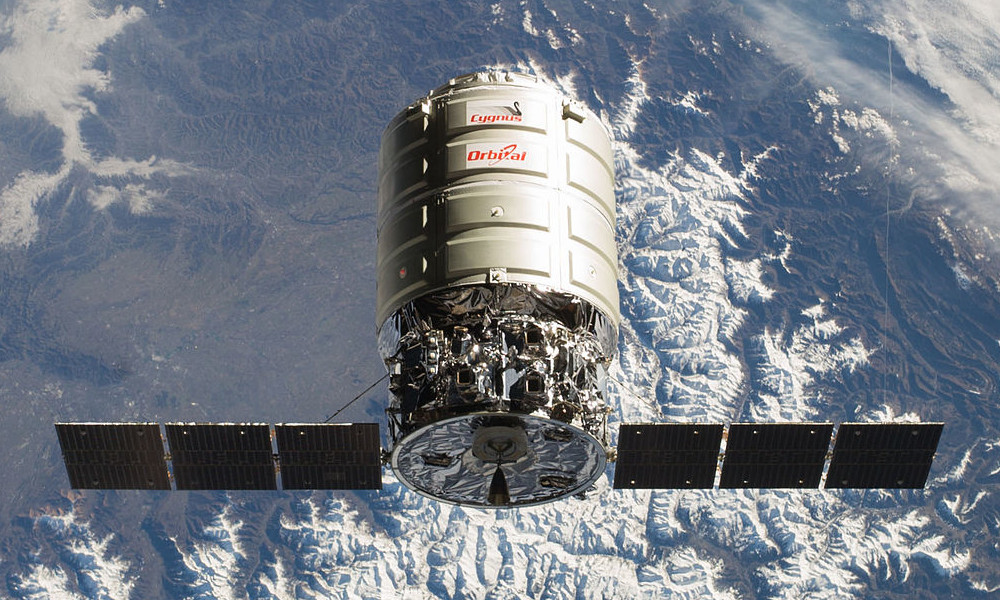
Cygnus is designed to only carry cargo to the International Space Station. It uses an Antares launcher to reach orbit and its own engines to rendezvous with the station. The Antares launcher were developed by Orbital Sciences Corporation and now manufactured and launched by Northrop Grumman Innovation Systems.
Cygnus does not dock directly with the ISS but is grappled using the station robotic arm and berthed to a port on the station.